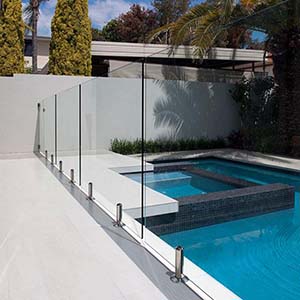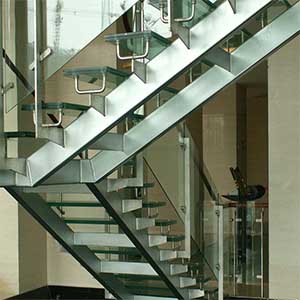How Safety Glass is Manufactured: A Step-by-Step Guide
Safety glass, which includes both tempered and laminated glass, is a crucial component in many modern applications, from automotive windshields to architectural structures. Its enhanced strength and safety features make it indispensable in protecting people from injury due to glass breakage. This article provides an in-depth, step-by-step guide on how safety glass is manufactured, highlighting the processes involved in creating both tempered and laminated glass.

The Basics of Glass Manufacturing
Before delving into the specifics of safety glass, it is essential to understand the basic glass manufacturing process. Glass is primarily made from silica (sand), soda ash, and limestone. These raw materials are melted together at high temperatures to form molten glass, which is then cooled and shaped into flat glass sheets, also known as float glass.
Manufacturing Tempered Glass
Tempered glass, or toughened glass, is created by subjecting float glass to a thermal process that significantly enhances its strength. Here are the steps involved in manufacturing tempered glass:
1. Cutting and Edge Preparation
The process begins with cutting the float glass to the required dimensions. This is done using automated cutting machines that ensure precision. Once cut, the edges of the glass are polished to remove any imperfections that could cause breakage during the tempering process [5].
2. Inspection
Before the glass is tempered, it undergoes a thorough inspection to detect any flaws or impurities. These imperfections can compromise the strength of the tempered glass, so this step is crucial in ensuring high-quality output [5].
3. Cleaning
The glass is then cleaned to remove any dust, oils, or residues that may have accumulated during the cutting and handling processes. This is typically done using specialized cleaning solutions and equipment to ensure the glass surface is spotless before entering the furnace [5].
4. Heating
The cleaned glass sheets are loaded into a tempering furnace, where they are heated to a temperature of around 620 degrees Celsius. This high temperature causes the glass to soften slightly, preparing it for the rapid cooling process that follows [6].
5. Quenching (Rapid Cooling)
Once the glass reaches the required temperature, it is rapidly cooled using air jets in a process called quenching. This sudden cooling creates a balance of compressive and tensile stresses within the glass, significantly increasing its strength. The outer surfaces of the glass cool and solidify faster than the interior, resulting in a strong, durable product [6].

Manufacturing Laminated Glass
Laminated glass is made by bonding two or more layers of glass with an interlayer of polyvinyl butyral (PVB) or ethylene-vinyl acetate (EVA). This interlayer holds the glass together even when shattered, providing enhanced safety and security. Here’s a step-by-step guide to the laminated glass manufacturing process:
1. Cutting and Cleaning
Similar to tempered glass, the process starts with cutting the float glass to the desired size and cleaning it thoroughly to remove any contaminants. Precise cutting and cleaning are crucial for ensuring the quality and performance of the final laminated glass product [1].
2. Preparing the Interlayer
The interlayer, usually made of PVB or EVA, is cut to the same dimensions as the glass sheets. This interlayer is responsible for holding the glass layers together upon impact, enhancing the overall safety and performance of the laminated glass [2].
3. Assembly
The glass and interlayer are assembled in a clean, controlled environment to prevent any dust or particles from getting trapped between the layers. The typical assembly involves sandwiching the interlayer between two or more glass sheets [2].
4. Preliminary Bonding
The assembled glass and interlayer are then passed through rollers or a vacuum bag to remove any air bubbles and ensure proper adhesion. This preliminary bonding step helps in preparing the glass for the final lamination process [2].
5. Autoclaving
The assembled and preliminarily bonded glass is placed in an autoclave, a high-pressure oven. In the autoclave, the glass is subjected to heat (around 140 degrees Celsius) and pressure (typically 10-15 times atmospheric pressure) for a specified period. This process ensures that the glass and interlayer are firmly bonded together, creating a single, cohesive unit [2].
Advantages of Safety Glass
Both tempered and laminated glass offer distinct advantages, making them suitable for various applications:
Tempered Glass
Strength: Tempered glass is up to five times stronger than untreated glass of the same thickness.
Safety: When broken, it shatters into small, blunt pieces, reducing the risk of injury.
Thermal Resistance: It can withstand higher temperatures and sudden temperature changes, making it ideal for oven doors, stovetops, and other high-heat applications [3].
Laminated Glass
Safety: The interlayer holds the glass fragments together when shattered, preventing dangerous shards from scattering.
Security: It is more difficult to penetrate, providing an added layer of protection against break-ins and forced entry.
Sound Insulation: The interlayer dampens sound, making laminated glass ideal for soundproofing applications.
UV Protection: Laminated glass can block up to 99% of UV rays, protecting interiors from fading and damage [6].
Applications of Safety Glass
Due to their enhanced properties, tempered and laminated glass are used in a wide range of applications:
Tempered Glass Applications
Automotive Windows: Side and rear windows in vehicles are made of tempered glass to ensure passenger safety.
shower doors and enclosures: Its strength and safety features make it ideal for bathroom applications.
Furniture and Decor: Used in tabletops, shelves, and other furniture items for durability and safety.
Architectural Elements: Employed in facades, windows, doors, and balustrades for both residential and commercial buildings [5].
Laminated Glass Applications
Automotive Windshields: All modern car windshields use laminated glass for its strength and safety features.
Skylights and Overhead Glazing: Laminated glass is used in skylights to prevent dangerous shards from falling in case of breakage.
Architectural Applications: Used in windows, doors, facades, and railings for enhanced safety and security.
Soundproofing: Ideal for soundproof windows and partitions to reduce noise transmission [2].
Conclusion
Safety glass, encompassing both tempered and laminated glass, plays a vital role in modern architecture, automotive design, and various other industries. Understanding the manufacturing processes behind these types of glass highlights the complexity and precision involved in creating products that significantly enhance safety and performance. Whether for protecting vehicle occupants, ensuring the structural integrity of buildings, or providing sound insulation and UV protection, tempered and laminated glass are indispensable materials in today's world.
 English
English Russian
Russian




